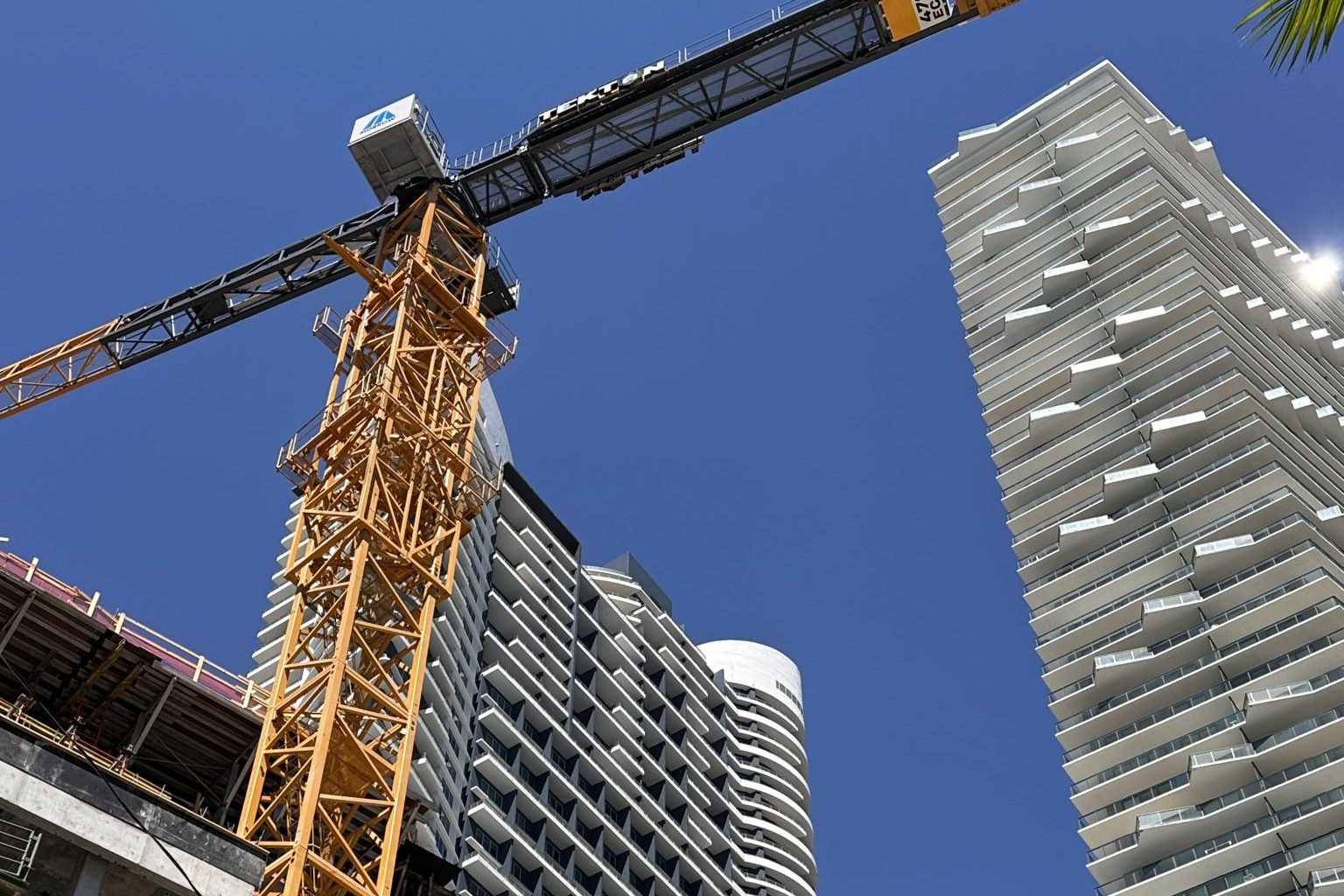Navigating the world of mortgages can often feel like a complex puzzle, especially when considering the acquisition of multiple properties. Whether you’re a real estate investor with multiple rental opportunities or a homeowner pondering additional real estate purchases, the question arises: How many mortgages can you have?
In this ultimate guide, we delve into the intricacies of holding multiple mortgages across different properties, unraveling the layers of requirements, benefits, and considerations.
Can I have two mortgages at once?
The short answer is yes, it’s entirely possible to have two mortgages at the same time, with one mortgage on one property, and another mortgage on a different property. The purpose for seeking a second mortgage may be to acquire a second/vacation home or a rental investment property.
The real question lies in the feasibility and the implications of such a decision.
When you apply for a second mortgage loan, lenders will meticulously review your credit history, income, existing debts, and your reasons for needing an additional loan. From the lender’s perspective, the risk associated with issuing a second mortgage is higher. Therefore, they might impose stricter eligibility criteria or higher interest rates. Your credit score plays a pivotal role here, as a strong credit history can alleviate some of the lender’s concerns.
There are also implications once you obtain the second mortgage loan and leave the closing table. Having two mortgages means managing two sets of monthly payments, interest rates, and insurance premiums. This can significantly impact your monthly budget and financial planning.
It’s therefore crucial to evaluate your financial resilience and consider potential changes in your income or expenses. You may decide that the long-term benefits of having two mortgages (e.g., tax advantages) outweigh the costs.
So, how many mortgages can you have at once?
The maximum number of mortgages that you can have at the same time on different properties depends on the lender’s guidelines and your ability to manage multiple mortgages at once. While some lenders have a cap of 10 mortgages, others allow as high as 20 mortgages at the same time.
For many real estate investors and homeowners, the question isn’t just about having two or three mortgages, or even 10 or 20; it’s about understanding the maximum number they can manage. This number varies depending on individual financial situations, lender policies, and the type of mortgages involved.
How many mortgages can you have for a rental property?
Investors often seek to expand their portfolios by acquiring additional rental properties. This leads to the very common scenario where an investor needs several mortgages simultaneously. Depending on the lender, an investor can have a maximum of 5, 10, or even 20 mortgages at the same time.
The mortgage landscape for rental properties differs significantly from that of primary residences. Lenders often view rental properties as higher risk and typically require higher down payments compared to primary residences. Demonstrating potential or existing rental income can be a crucial element in qualifying for additional mortgages.
Ready to buy a new rental property? Want to take out another loan? Next, we discuss the two main types of mortgage lenders you can apply to for the additional financing you’re seeking. Those two types of mortgage lenders are conventional lenders and non-QM lenders. As we’ll discuss, each lender type has different guidelines and approaches regarding financing multiple rental properties at the same time.
How many conventional loans can you have?
A “conventional” mortgage is a loan that isn’t part of a specific government program (e.g., FHA, VA). The most common conventional loans are those backed by Fannie Mae or Freddie Mac. Fannie and Freddie allow borrowers to have 10 loans at the same time on 1 to 4-unit properties.
Qualifying for more than one conventional mortgage loan typically involves stringent criteria, especially as you go beyond having four mortgages. (In 2009, Fannie Mae revised its guidelines, increasing the number of properties investors can finance simultaneously from four to ten.)
Lenders will closely examine your credit score, debt-to-income ratio, assets, and the amount of down payment. A strong financial profile is essential to get approved for additional conventional loans.
How many home loans can you have that are non-QM?
Technically a subset of conventional loans, non-qualified mortgages are known as alternative loans, offering creative loan solutions for borrowers falling outside the traditional mold. Compared to Fannie and Freddie, non-QM lenders have more flexible guidelines, allowing borrowers to simultaneously have up to 20 loans (or even more with an exception).
Non-QM loans have less stringent requirements for income verification, credit scores, and debt-to-income ratios. This flexibility can be particularly beneficial for investors or self-employed individuals who can’t show regular income streams.
Factors influencing eligibility for multiple alternative mortgages
When you apply to any lender for an additional mortgage on a new property, the lender – whether non-QM or traditional – will always assess your ability to repay the loan through the following criteria.
Credit history requirements
For conventional lenders and non-QM lenders alike, a strong credit history is crucial when you seek to finance multiple properties. Lenders will scrutinize your credit report to assess your reliability as a borrower.
- Conventional: Fannie and Freddie typically require a minimum credit score of 720. They also require no mortgage delinquencies of 30 days or greater within the past 12 months, and no bankruptcies or foreclosures within the past 7 years.
- Non-QM: These alternative lenders require lower minimum credit scores in the 600s. They are also more forgiving when it comes to mortgage late payments and past credit events.
Debt-to-income ratios
Your debt-to-income ratio (DTI) can be a key factor in determining your eligibility for additional mortgages. Conventional lenders use this ratio to evaluate whether you can afford the additional debt. However, non-QM lenders may ignore this factor altogether.
- Conventional: Under Fannie and Freddie guidelines, you’ll need a DTI no higher than 45%. You must provide 2 years of federal income tax returns to calculate your income.
- Non-QM: These alternative lenders allow DTIs as high as 50%. Or, under the debt-service-coverage ratio (DSCR) program, your DTI won’t be calculated at all; instead, the lender will qualify you based on the property’s rental income as calculated by the DSCR. This means that you don’t have to provide your tax returns to document your income.
Down payments
The amount of equity you have in your existing properties – as well as the amount of “skin in the game” you’re willing to provide for the to-be-acquired property – can also impact your ability to secure additional mortgages. A strong equity position can be advantageous in obtaining further financing. Lenders consider down payments to assess the risk associated with the loan.
- Conventional: Fannie and Freddie typically require 15 to 25% down payments for 1-unit properties and 25 to 30% for 4-unit properties.
- Non-QM: The required down payments are typically lower, depending on the property type.
There are various other requirements where non-QM lenders are laxer. For example, for post-closing cash reserves, Fannie and Freddie usually require 6 months’ reserves for each property, while non-QM lenders can require as little as 3 months’ reserves.
Benefits and risks of multiple alternative mortgages
When considering multiple mortgages, whether it’s a combination of conventional and non-QM loans or not, it’s important to weigh both the benefits and the risks involved. This balanced perspective helps in making informed decisions that align with your financial goals and risk tolerance.
Advantages of diversifying through multiple investment properties
Holding multiple mortgages on multiple rental properties at the same time means you don’t have to wait until you’ve paid off the mortgage on the first property. Rather, you can immediately take advantage of additional income streams.
Here are other benefits:
- Diversification of Investment Portfolio: Holding mortgages on multiple properties allows investors to diversify their investment portfolios. This diversification can spread risk across different real estate markets (whether it’s different neighborhoods or different states altogether) and different property types (1, 2, 3, and/or 4-unit properties), potentially leading to more stable and consistent returns.
- Potential for Higher Returns: Holding multiple investment properties can help hedge against inflation and can offer higher returns compared to traditional investments. The rental income and potential appreciation in property value can contribute significantly to an investor’s wealth.
- Tax Advantages: Acquiring multiple rental properties can be a smart investment strategy, as it provides more opportunities for tax deductions. This approach enables you to leverage write-offs like mortgage interest, insurance, and various other expenses, effectively reducing the tax impact on the income earned from these properties.
Risks and challenges associated with managing multiple mortgages
To help with your cost-benefit analysis, here are some disadvantages of having multiple mortgages simultaneously:
- Increased Financial Burden: Managing multiple mortgages increases the financial burden. Lenders typically charge higher interest rates for additional properties, especially investment properties, as they are considered higher risk compared to primary residences. This requires careful budgeting and financial planning.
- Market Volatility: Real estate markets can be unpredictable. Changes in market conditions can affect property values and rental incomes, impacting the profitability of your investments.
- Complexity in Management: Owning multiple properties increases the complexity of property management. This includes dealing with tenants, maintenance issues, and legal requirements, which can be time-consuming and challenging.
The potential for multiple mortgages with alternative solutions
Exploring the realm of alternative lending solutions opens up new possibilities for acquiring multiple mortgages, especially if you want 10 or even 20 mortgages at the same time.
Flexibility of alternative lenders regarding multiple mortgages
As discussed, alternative lenders often show a higher degree of flexibility when it comes to unique financial situations. This is particularly beneficial for borrowers who may not meet the traditional lending criteria due to irregular income or self-employment.
Unlike Fannie and Freddie, which are capped at 10, non-QM lenders allow up to 20 mortgages, but it is important to note that alternative lenders also offer rental portfolio loans, which might make more sense depending on your situation. A rental portfolio loan is essentially a single, blanket loan that covers multiple properties.
Rental portfolio loans offer the convenience of consolidating multiple property loans into one, simplifying the borrowing process for investors. This approach means a single monthly payment, instead of multiple payments for different properties. However, all properties are collateral, so failing to make payments can put all of them at risk. Additionally, these types of loans may have higher interest rates and fees compared to individual property loans.
Bottom line, whether you’re looking for multiple mortgages on multiple properties, or a single mortgage on multiple properties, you can get that flexibility from non-QM alternative lenders.
How non-traditional lenders assess risk and eligibility for multiple mortgages
Non-QM lenders use innovative methods to assess risk, looking beyond traditional credit scores and financial histories. This can include analyzing cash flow, the potential profitability of investment properties, and other non-conventional indicators of financial health.
Particularly in the case of investment properties, non-QM lenders offer DSCR loans, which only consider the income of the property, not the income of the borrower. This approach can be advantageous for investors who are looking to expand their portfolio but may not have the personal income to qualify under traditional criteria, i.e., 2 years of tax returns.
For more information on the DSCR loan and other creative programs offered by non-QM lenders, consult our residential investment loan guide.
DAK Mortgage’s expertise in navigating alternative lending options
At DAK Mortgage, we specialize in navigating the complex landscape of alternative lending options.
Our expertise lies in understanding the unique needs of each client and recommending the right lending solutions.
Whether you’re an experienced real estate investor or you’re about to get started on acquiring your second property, our team is equipped to guide you through the process of securing multiple mortgages and get the best solution for you.
Key takeaways: How many mortgages can I have?
Securing financing for several rental properties can be more complex than obtaining a single mortgage, involving additional steps and considerations.
While conventional lenders are capped by Fannie and Freddie’s 10-mortgage limit, alternative non-QM lenders allow up to 20 simultaneous mortgages on different properties.
Therefore, the diverse range of financing options available means that all investors – those with a strong financial background and those with a less-than-perfect profile – are likely to discover a suitable financing strategy that aligns with their needs.










